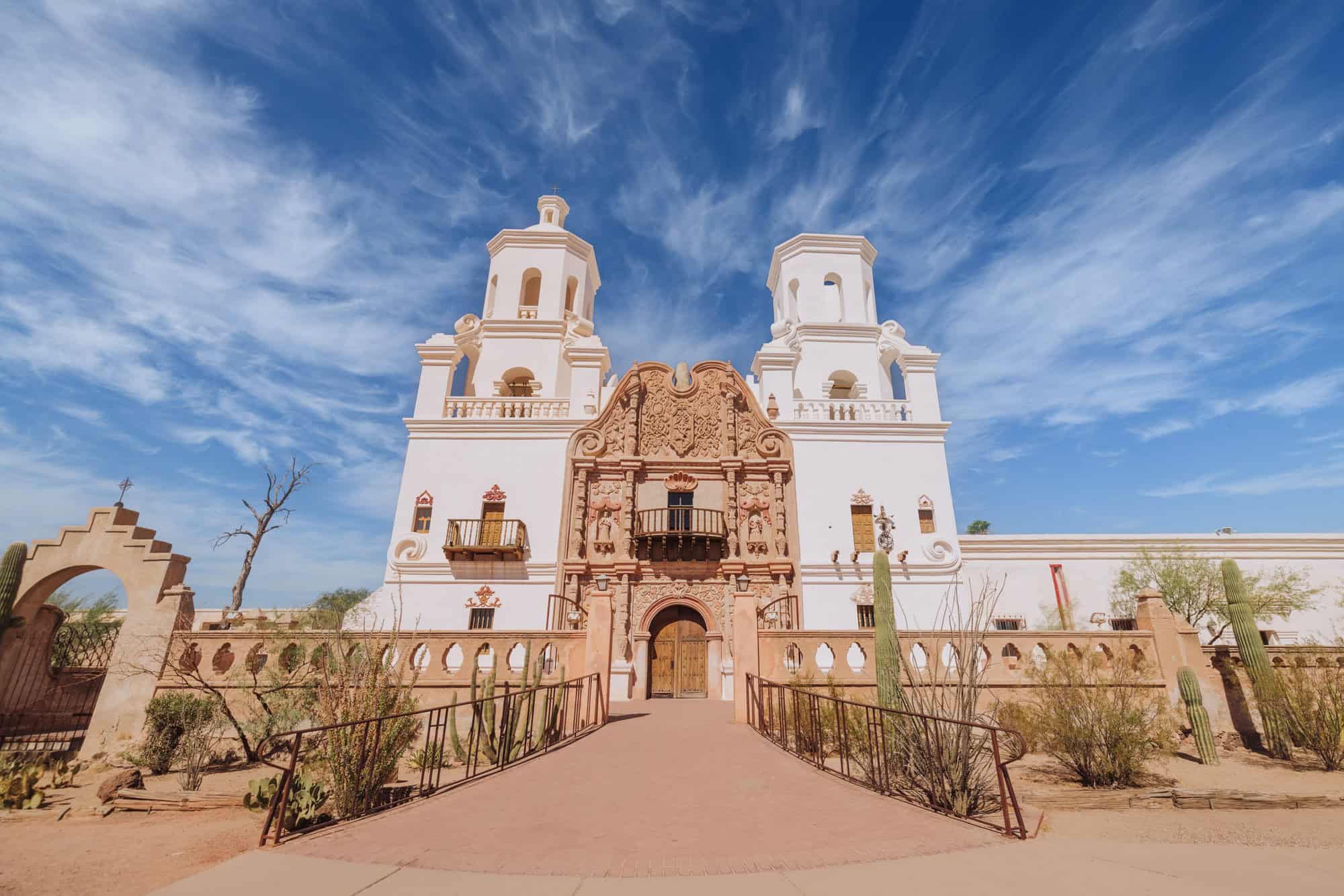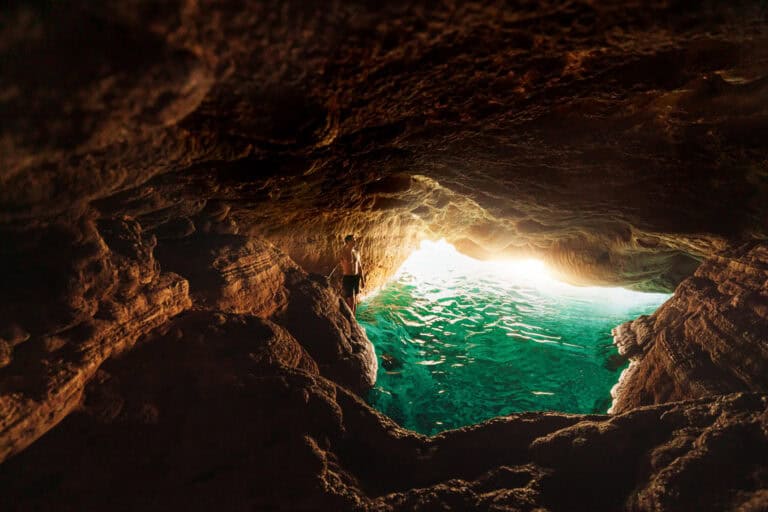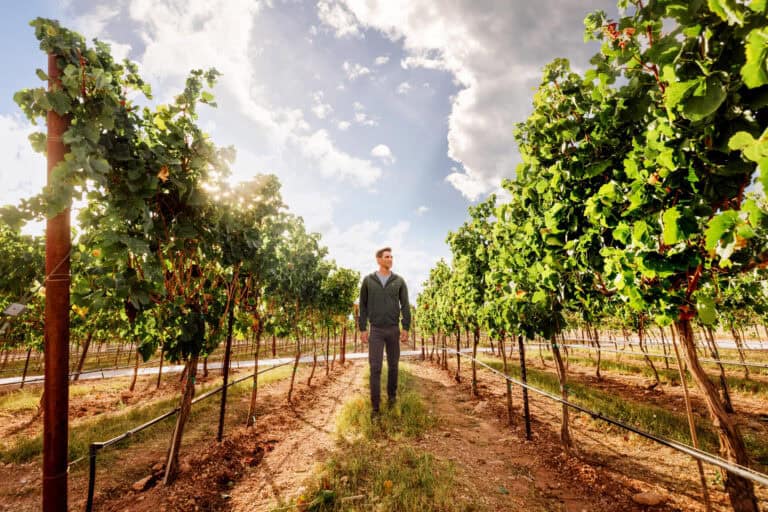San Xavier Mission in Tucson: The “White Dove of the Desert”
Located just south of downtown Tucson on the Tohono O’odham Reservation, the San Xavier Mission is one of the most iconic and well-preserved examples of Spanish Colonial architecture in the United States.
Known as the “White Dove of the Desert,” the Mission is a historical and spiritual attraction for visitors, and also still a functioning church community.
Construction and History of the Mission
The San Xavier Mission is more than 300 years old!
Origins (1692)
The mission was founded by Jesuit missionary Father Eusebio Francisco Kino, also known as “Padre Kino,” who laid the groundwork for converting local Tohono O’odham communities to Christianity.
Present Structure (1783)
The current church was constructed under Franciscan priests after the Jesuits were expelled from Spanish territories in 1767. Its design reflects a blend of European and Indigenous craftsmanship.
Architectural Highlights
The mission’s distinctive white stucco facade contrasts with the surrounding Sonoran Desert.
Inside the San Xavier Mission
Inside the San Xavier Mission, visitors find vibrant frescoes, intricate carvings, and religious symbols depicting Catholic saints and Tohono O’odham spiritual themes.
The combination of vibrant colors, detailed carvings, and religious symbolism inside the mission makes the Mission more than a spiritual center. These works of art are important historical artifacts which have been preserved for generations.
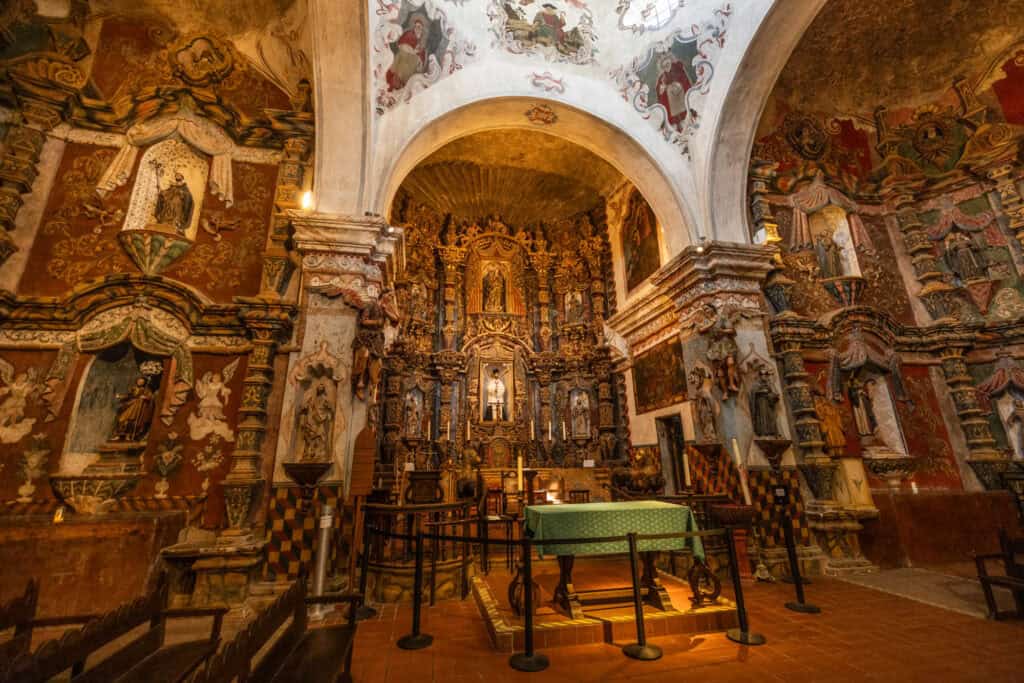
Main Sanctuary
The sanctuary is relatively small. You’ll find a richly decorated altar with gilded and painted religious statues and carvings. The altar’s centerpiece features an image of St. Francis Xavier, the mission’s namesake. Detailed frescoes and murals adorn the walls and ceilings, depicting saints, biblical scenes, and Native motifs.
Look up to see patterns and floral designs influenced by Native American and Spanish styles.
The choir loft, accessible by stairs, features a historic organ and space for choral performances.
Side Chapels
Small chapels are used for private prayer and feature additional statues and artwork. The chapels contain votive candles, allowing visitors to light a candle as an offering or prayer.
Cultural and Religious Significance
The San Xavier Mission remains an active Catholic parish serving the Tohono O’odham Nation. Daily Mass and special celebrations, draw both locals and pilgrims.
Ongoing restoration projects ensure that the mission’s beauty and historical integrity are maintained, funded largely by donations and grants.
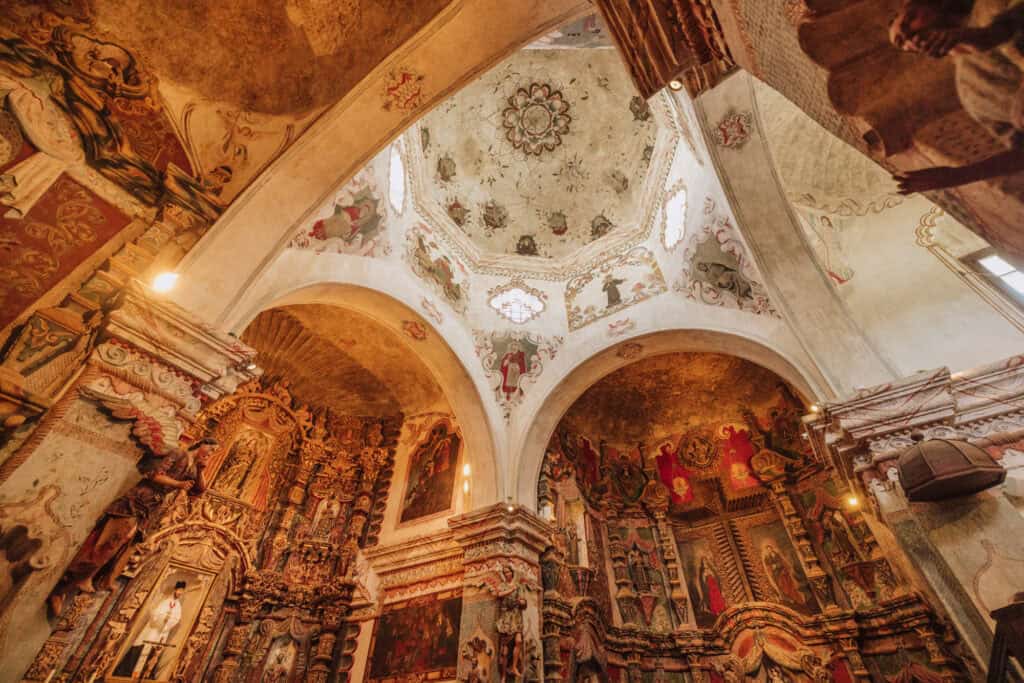
Planning Your Visit to the San Xavier Mission
Here are the basics to keep in mind:
- Location: 1950 W. San Xavier Rd, Tucson, AZ.
- Hours: Open daily from 8 AM to 5 PM. Guided tours are available for a deeper understanding of the mission’s history and artistry.
- Admission: Free, though donations are encouraged to support preservation efforts.
Current Day Use
The San Xavier Mission is more than a historical site; it’s a living monument.
The San Xavier Mission is still an active Catholic parish, serving the Tohono O’odham Nation and others, hosting daily Mass, weddings, baptisms, and other religious ceremonies. The mission also plays a vital role in cultural preservation and education, offering tours, special events, and a small museum showcasing its history.
Additionally, the Mission acts as a spiritual and cultural hub for both locals and visitors, blending traditional Catholic practices with elements of Tohono O’odham culture. Its known for vibrant Feast Day celebrations, such as the Feast of St. Francis.
Travel Advice for Southern Arizona
- Best Time to Visit: Early morning or late afternoon in summer to avoid the midday heat.
- Accessibility: The mission is wheelchair accessible, though some uneven terrain exists around the grounds.
- Nearby Attractions: Combine your visit with stops at the Arizona-Sonora Desert Museum or Saguaro National Park.
Other Destinations in Southern Arizona
- Kartchner Caverns
- Fishing at Roper Lake or Dankworth Pond
- Saguaro National Park
- Picacho Peak State Park
- Chiricahua National Monument
- The wineries in Sonoita & Elgin, including Dos Cabezas, Los Milics, and Rune Wineworks
- Bisbee
- The retro town of Lowell, AZ (near Bisbee)
- Tombstone

